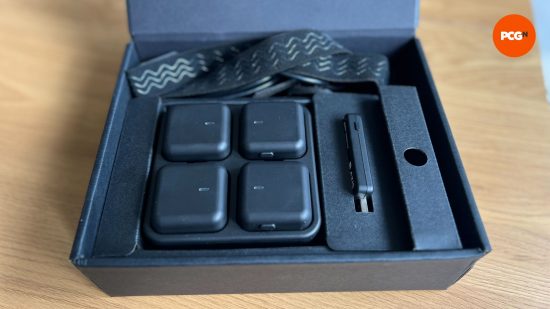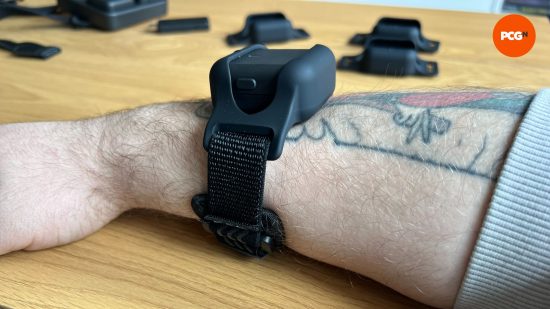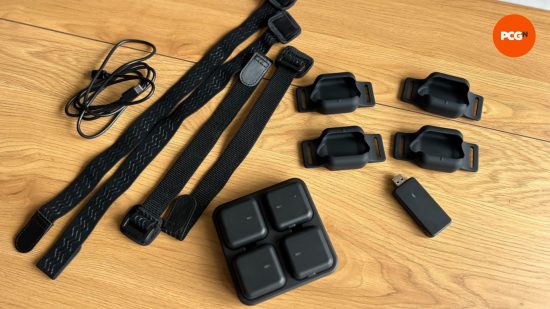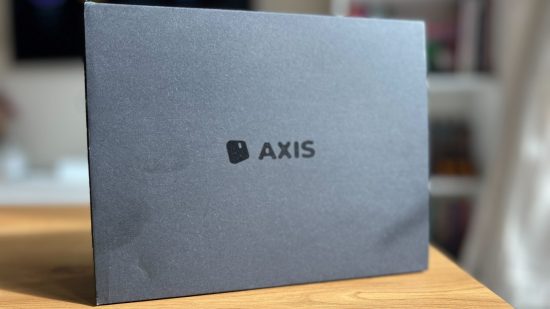Our Verdict
A complex setup and a sometimes sticky calibration process are outweighed by the natural feel and implementation of Axis Lite once you’re all set up. This feels like an effortless way to deepen your immersion in VR games, and if support is widely adopted, it may become a must-have extension to your standard headset and controllers.
- Massively improves immersion where supported
- Easy to calibrate
- Uses outside of just VR tracking
- Included straps aren't fit for purpose
- High cost versus supported games
- Initial setup is tough
VR gaming is in a boom period thanks to the successful launch of the Meta Quest 3 and a recent string of boundary-pushing game releases. Axis Lite has the chance to play a big role in immersive VR moving forward, and in its current state, it is a great peek into where virtual reality is heading. While a convoluted setup process might turn some away, once sorted, the Axis Lite is a great showcase for next-level immersion in VR gaming.
Buying any of the best VR headsets is already an expensive game, so if you’re looking to push your experiences further, there is a sizable cost involved. The Axis Lite is reasonably priced in my opinion, but it still ultimately feels targeted towards an enthusiast audience.

Axis Lite features
The Axis Lite is comprised of four sensors, designed to be worn on your legs to add tracking into any game that supports full-body motion. This is achieved by connecting a wireless dongle to your PC and registering the Axis nodes within the desktop app. There’s nothing to stop you from adding tracking elsewhere on your body, but with just four nodes included in the Axis Lite package, it’s pointless to attempt to add tracking elsewhere.
Straps are included so you can safely and securely attach the Axis Lite to your body without fear of slipping or nodes coming loose. A charging dock is also included that’s powered via USB-C and uses contact charging to power the nodes when you’re not using them. A USB-C cable and US plug are included, so other regions will need an adaptor or alternative power solution.

Axis Lite design
Each Axis node is quite small and light, weighing in at 37g each. This is perfect for not creating an additional strain on your legs while you play. Unfortunately, the included straps aren’t very friendly for those with bigger legs. The straps were tight when sitting just below my knee and outright wouldn’t fit above it.
It’s possible to fashion larger straps by combining two of the included straps, but that then leaves you short of ways to connect all four Axis nodes at the same time, unless you purchase additional third-party straps that have more give to them.
I find it hard to believe that the included straps are meant for legs at all, as they appear far more suitable for typical arm sizes.

Axis Lite performance
The Axis Lite tracking is superb. There’s no reason to talk around the fact that for adding immersion to your virtual reality gaming, it’s hard to beat the responsiveness and tracking capabilities of Axis nodes.
The calibration and live view within the Axis desktop app is great for knowing exactly the kind of performance and capture you can expect in-game, and saves you from the hassle of having to endlessly restart your games as you figure out how in sync the full body tracking is.
Unfortunately, not many major VR apps or games really capitalize on full body tracking, with the most popular uses being found in VRChat and for Vtubing purposes. Thankfully, there are some gaming experiences that do, and most of my time was spent with Blade and Sorcery instead.
Adding full body tracking does scale up the immersion massively, and provided you have the safe space available to play with, it’s a natural progression to bring purpose to your legs instead of only flailing your upper extremities.
It’s not quite on the same level as adding a VR treadmill into your setup, as moving your legs doesn’t provide any momentum in-game unless you have the physical space to explore. Instead, it’s the added immersion of seeing your in-game body reaction to everything you’re doing IRL.
The real impact of Axis is only felt within apps like VR Chat right now, as you are constantly interacting with others who can appreciate the improved tracking and additional points of articulation. Beyond this, with limited games available to play, it’s a shame we couldn’t go bigger with our testing, which is an issue that has plagued many other testers.
Whether or not I’m sold that this needs to be something every VR gamer needs to add to their repertoire is still entirely down to the compatible apps. As more games add full body support, the need for systems like Axis Lite will become far greater, and hopefully by then the price will have dropped to be at a more accessible level. Just because VR in general can be an expensive hobby doesn’t mean expanding your experience has to match this in terms of cost.
One potential extra use for a system like Axis Lite is for animation creation. While testing out the calibration within the Axis Studio, it was clear that the Axis nodes could perhaps be used as a form of animation recording, and I would love to see this adopted and become a fully adopted feature because it would widen the appeal of Axis massively.
Conclusion
There is so much to like about what Axis Lite brings to the table for under $300, if you can jump on the early bird pricing that ends in March 2024. With the final MSRP currently unknown beyond the fact that it won’t exceed $399, it’s hard to give firm backing to the Axis Lite above this initial sub-$300 cost.
As great as it is, most casual VR gamers are unlikely to consider dropping $300 for this entry-level Axis product, especially with limited game compatibility. There’s also the glaring issue around comfort for the included straps, and this requires a fix that ultimately requires additional money to be spent.
There are alternatives to Axis Lite, albeit only some that are similar in form factor. Most, however, are just as awkward to set up initially and aren’t as accurate or easy to adjust when it comes to their tracking, but due to how little space the Axis Lite takes up when playing, I would give it the advantage over a lighthouse tracking system on both fronts.
